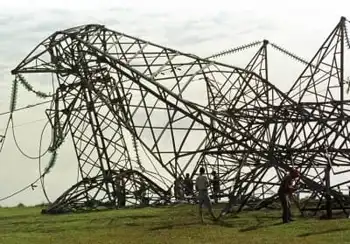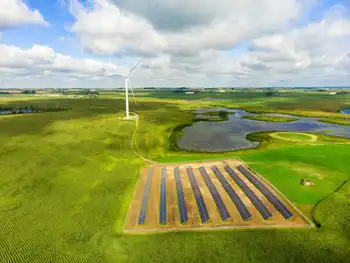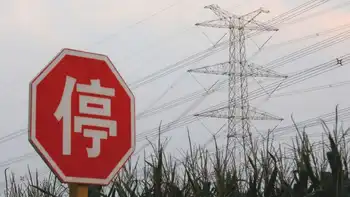Green power worth the cost: Liberals
ONTARIO - Being green has a price tag. And starting now, OntarioÂ’s Liberal government is laying out its case for greener, but pricier power.
The province released a document outlining its targets for how to generate power in the province: How much by nuclear, water, wind, sun and the rest.
Premier Dalton McGuinty was mum on further details about the long-term energy plan earlier, but said he hopes it smokes out the opposition parties — who have been highly critical of rising energy costs — on what they would do.
“Now we’re calling out the opposition: Okay, so we put out exactly what our costs are, exactly what our plan is, we’ve been very up front with the people of Ontario... now let’s see yours,” he said.
“Let’s have a real debate on specifics. Let’s move beyond rhetoric to reality,” the Premier said after a speech to the Toronto Forum for Global Cities.
He took a shot at the Progressive Conservatives and New Democrats, accusing them of being against green power.
“Unless you graduated from Hogwarts, you can’t retire billions in debt, build thousands of megawatts of new power and a whole new industry without costs going up,” he said. “Not even Harry Potter is that magical.”
The new plan — which is expected set goals rather than prescribe specific projects — will be forwarded to the Ontario Power Authority to do the detailed work.
Parts of the plan will come as no surprise.
The province has already said it anticipates getting about half its power from nuclear plants — roughly the same as now.
It has also promised to shut down all its coal-fired generators by 2014.
If the province is going to stay the course on nuclear, and cut out coal, it will have to make up the gap with renewable energy and conservation.
That also probably means more natural gas-fired generation will be needed, since renewables like wind often perform poorly at times of peak demand, and gas is needed to fill the gaps.
Since the province just killed a natural gas-fired plant in Oakville after encountering fierce local opposition, finessing that issue will be tricky.
Wind farms are often met by mixed receptions in their host communities.
Wind and other renewables also produce more costly power, which McGuinty acknowledged.
“Clean energy does cost more,” he said, although the Liberals also argue that pollution spewed by coal plants creates disease that costs the health system billions.
Conservative Leader Tim Hudak said the government has lost sight of ratepayersÂ’ ability to pay electricity bills.
“We need to take a different path when it comes to energy policy in the province of Ontario — one that puts the consumer as the focus,” he told reporters at Queen’s Park.
“The families and businesses that pay the bills should be the predominant thing everybody thinks about on energy policy,” Hudak told reporters at Queen’s Park.
Price isnÂ’t the only question mark hanging over the plan.
The province will have to build new nuclear plants to replace aging units at the Pickering station, if nuclear is to be kept at its current level.
The provinceÂ’s first choice would be to buy them from Atomic Energy of Canada Ltd., which is based in Ontario and has built all its other reactors. But since the federal government has put the company up for sale, its fate is uncertain.
And the plan has another question mark: How new is it, really?
The plan kicks off a second attempt by the Liberals to chart a long-term plan for the province.
The power authority produced a massive strategy document in 2007, but the province sidetracked it the next year, and it was never formally adopted.
Jan Carr, who led the power authority when it produced the 2007 plan, wonders how the new plan will differ from the old.
Carr said a key element of any new plan, and one often overlooked, is the need for new transmission wires. HeÂ’s curious to see how, or it, that will be addressed.
Wind and solar developments in far-flung locations has to be moved to where the customers are, he noted. That means stringing more wires.
“Transmission is a very unpopular type of infrastructure to build,” said Carr. “No one wants you to build it. No one.”
While the Liberals try to sell the long-term benefits of green power, theyÂ’re also worrying about the short-term damage of high power prices.
Just recently, they announced a 10 per cent rebate on electricity bills for households and small businesses. That neatly offsets the 8 per cent jump in hydro bills that was tacked on May 1 when the HST came into force.
Now, the government has decided to give consumers on time of use rates an extra two hours of low, off-peak rates. The low rate will kick in at 7 p.m. instead of 9 p.m.
Bruce Sharp of Aegent Energy Advisors estimates a 7 per cent increase during the remaining hours of the day would be needed to take up the slack. He calculates that could be done by increasing peak rates to 10.7 cents a kilowatt hour from 9.9 cents, and mid-peak rates to 8.7 cents from 8.1 cents.
Related News

New Power Grid “Report Card” Reveal Dangerous Vulnerabilities
WASHINGTON - The U.S. power grid just received its “grade card” from the American Society of Civil Engineers (ASCE) and it barely passed.
The overall rating of our antiquated electrical system was a D+. Major power outages in the United States have grown from 76 in 2007 to 307 in 2011, according to the latest available statistics. The major outage figures do not take into account all of the smaller outages which routinely occur due to seasonal storms.
The American Society of Civil Engineers power grid grade card rating means the energy infrastructure is in “poor to fair condition and mostly below…




